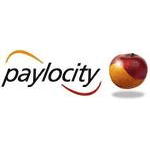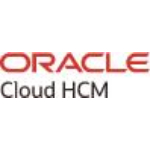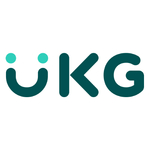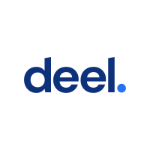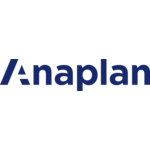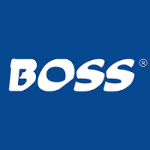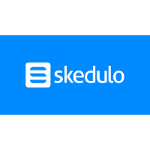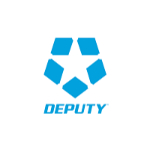
TechnologyCounter provides genuine, unbiased real user reviews to help buyers make informed decisions. We may earn a referral fee when you purchase through our links, at no extra cost to you.
List of 15 Best Workforce Optimization Software
Showing 1 - 15 of 171 products
Deputy
System by Deputy
Deputy is a software designed to streamline workforce management. With its user-friendly interface features, Deputy offers a seamless solution for scheduling, time tracking, and communication. Say goodbye to the headache of managing your team and hel...Read Deputy Reviews
Paylocity is a leading provider of cloud-based payroll and human resources solutions, dedicated to making work easier for businesses of all sizes. With a user-friendly interface and a wide range of customizable features, Paylocity helps streamline pa...Read Paylocity Reviews
Rippling - your all-in-one solution for managing your teams human resources. Say goodbye to the hassle of manual paperwork and multiple systems, as Rippling streamlines processes like onboarding, payroll, and benefits administration into one easy-to-...Read Rippling Reviews
Oracle Fusion Cloud HCM is a versatile and modern human capital management software designed to enhance employee engagement and streamline HR operations. With intuitive features and seamless integration, it empowers organizations to optimize their wo...Read Oracle Fusion Cloud HCM Reviews
UKG Pro is a software that streamlines all of your HR needs. Say goodbye to tedious tasks and hello to increased efficiency, accuracy, and productivity. With its user-friendly interface features, UKG Pro is changing the game for businesses of all siz...Read UKG Pro Reviews
Paycom, an innovative HR and payroll software that streamlines your business operations and empowers employees. With its user-friendly interface features, Paycom simplifies tasks such as time tracking, benefits management, and compliance reporting. S...Read Paycom Reviews
Quinyx is a leading name in workforce management software that helps businesses streamline their workforce operations. With powerful features design, Quinyx offers a user-friendly solution for employee scheduling, time tracking, communication, and mo...Read Quinyx Reviews
Deel, the innovative software transforming the way businesses manage their global remote teams. With its user-friendly interface features, Deel streamlines tasks such as payroll, contracts, and compliance, making it the go-to solution for remote work...Read Deel Reviews
Remote, the innovative HR software that is revolutionizing the way we work. With its user-friendly interface features, Remote allows you to seamlessly connect and collaborate with your team from anywhere in the world. Say goodbye to the limitations o...Read Remote Reviews
UZIO is a all-in-one HR platform designed to streamline and simplify your workforce management. With powerful features interface, UZIO offers everything from payroll and benefits administration to performance management and time tracking. Say goodbye...Read UZIO Reviews
SAP SuccessFactors a leading cloud-based human resource management software. Developed by SAP, this software offers an efficient and streamlined approach to manage HR tasks such as performance management, learning and development, and recruiting. Wit...Read SAP SuccessFactors Reviews
Anaplan is revolutionizing the way businesses plan and make decisions, leaving traditional methods in the dust. With its innovative platform, Anaplan empowers organizations of all sizes to streamline their planning processes, collaborate effectively,...Read Anaplan Reviews
BOSS HR is a HR solution for businesses. Simplify your HR processes with our user-friendly is a software, designed to streamline employee management, payroll, and other HR tasks. Say goodbye to manual processes and hello to a more organized is a HR s...Read BOSS HR Reviews
Skedulo is a workforce management software designed to streamline complex scheduling processes for businesses of all sizes. With its user-friendly interface features, Skedulo simplifies employee scheduling, job dispatching, and task management, allow...Read Skedulo Reviews
Braid is a software that helps individuals and businesses effectively manage their projects with ease and efficiency. This innovative tool simplifies project management by offering a user-friendly interface and powerful features. With Braid, you can...Read Braid Reviews
- What Is Workforce Optimization Software?
- Top Reasons Why Businesses Need Workforce Optimization Software?
- What Are the Top Key Features of Workforce Optimization Software?
- What Are the Top Benefits of Workforce Optimization Software?
- What Are the Steps to Choose the Right Workforce Optimization Software?
- What Are the Types of Workforce Optimization Software for Different Industries?
- What Are the Technology Trends for Best Workforce Optimization Software?
- What Are the Technology Trends for Best Workforce Optimization Software?
What Is Workforce Optimization Software?
Workforce optimization software refers to a collection of software applications that are specifically developed to improve and optimize the workforce inside a business. The utilization of this tool aids managers and supervisors in effectively developing, sustaining, and overseeing staff performance.
The program offers a comprehensive suite of features designed to facilitate the recruitment, retention, and professional growth of organizational personnel. Additionally, this framework encompasses various dimensions of performance management, including the establishment of objectives, the enhancement of employee growth and feedback mechanisms, as well as the implementation of rewards and acknowledgment systems.
Additionally, the program is utilized for the purpose of labor cost management and shift scheduling. Furthermore, this practice aids in ensuring the active involvement and efficiency of personnel by discerning areas requiring enhancement and delineating the requisite measures to be undertaken.
In summary, the best workforce optimization software facilitates the simplification and streamlining of the management process for a sizable and heterogeneous team, enabling firms to prioritize the enhancement of workforce performance.
Top Reasons Why Businesses Need Workforce Optimization Software?
1. The implementation of automated systems for human resources (HR) functions, including but not limited to employee onboarding, performance evaluations, benefits management, and payroll administration.
2. Enhanced transparency and managerial authority over the entirety of the employee's tenure.
3. The implementation of a streamlined and systematic approach to employee development and training is being considered.
4. Enhanced communication and collaboration among staff members and supervisors.
5. One notable outcome is the enhancement of productivity and operational effectiveness within the work environment.
6. One of the benefits of enhanced planning and forecasting is the reduction in labor costs.
7. The implementation of strategies to improve employee engagement and satisfaction has been enhanced.
8. The implementation of enhanced retention strategies has resulted in a decrease in staff turnover rates.
9. One potential benefit is a decreased likelihood of data breaches and cyberattacks.
10. The capacity to recognize and analyze significant trends and patterns within the labor force.
11. The utilization of predictive analytics for the purpose of identifying prospective areas of enhancement.
12. Precise and thorough performance data.
13. The implementation of a unified data platform is crucial in facilitating data-driven decision-making processes.
14. Enhanced workforce scalability.
15. The perpetual enhancement and streamlining of procedures and allocation of resources.
What Are the Top Key Features of Workforce Optimization Software?
1. Automated Scheduling: The utilization of workforce optimization software empowers managers to generate automated schedules for staff with the simple action of pressing a button. Automated scheduling systems play a crucial role in ensuring the precision and currency of schedules, while concurrently diminishing the need for manual labor, minimizing errors, and enhancing workforce productivity.
2. Performance Management: This functionality allows managers to monitor and evaluate the performance of employees. Performance management is utilized to ascertain individuals who are not meeting expectations, facilitate well-informed decision-making, and establish strategies for professional growth.
3. Time and Attendance Tracking: This functionality enables managers to precisely monitor staff attendance, working hours, and instances of absence. Automated systems have the capability to minimize the need for manual data entry, hence mitigating the possibility of potential errors.
4. Employee Engagement Monitoring: The utilization of the best workforce optimization software enables the monitoring of staff engagement levels through the examination of essential variables, including task fulfillment, feedback reception, and customer contentment. This aids managers in the identification of optimal strategies and the discovery of areas that can be enhanced.
5. Compliant Documentation: This functionality facilitates the automated tracking of workforce modifications, thereby assuring adherence to pertinent regulatory requirements.
6. Automated Payroll Calculations: Automated payroll calculations have the capacity to mitigate human errors and guarantee the timely and precise remuneration of employees.
7. Analytics: Workforce optimization solutions offer robust analytics that enable managers to expediently make well-informed decisions. This feature enables customers to acquire valuable insights pertaining to worker utilization and planning, productivity, and other related topics.
What Are the Top Benefits of Workforce Optimization Software?
Workforce optimization software provides organizations with a wide range of benefits, including:
1. Increased Employee Engagement: Workforce optimization software facilitates the enhancement of employee engagement inside enterprises by offering insights into individual performance through the utilization of staff profiles and tracking mechanisms.
2. Improved Efficiency: Through the monitoring of employees' time and performance, firms can effectively identify potential areas for time-saving and enhance overall efficiency.
3. Improved Communication: By employing top workforce optimization software, firms can gain a comprehensive comprehension of the collective functioning of their personnel, hence facilitating enhanced communication.
4. Enhanced Productivity: Workforce optimization tools promote employee productivity and job satisfaction by equipping employees with the essential tools and information required to perform their job duties efficiently.
5. Reduced Costs: Organizations have the potential to achieve cost savings through the implementation of automated procedures, such as those pertaining to payroll and scheduling, alongside enhanced access to performance data.
6. Improved Recruiting and Training: The best Workforce optimization software facilitates enhanced comprehension of personnel within organizations, enabling more informed decision-making in areas such as recruitment, training, and retention.
What Are the Steps to Choose the Right Workforce Optimization Software?
1. Identifying your business needs: What are the intended objectives that you aim to accomplish through the implementation and utilization of workforce optimization software? The software's potential benefits encompass several aspects including scheduling, communication, time tracking, employee performance reviews, and other related operations.
2. Research software providers and features: Evaluate several workforce optimization solution suppliers and identify the characteristics that align most effectively with your specific requirements. When evaluating a system, it is important to take into account many factors such as the number of users, cost, ease of interface with current systems, and quality of customer support.
3. Ask questions: It is advisable to initiate communication with the service providers in order to inquire about the various aspects of their product, such as its capabilities, implementation process, technical support, and ongoing maintenance.
4. Test Drive the system: Conduct a comprehensive examination of the system and assess its suitability in accordance with individual requirements. It is imperative to ensure that the system possesses a high degree of user-friendliness and incorporates all the essential features required for achieving success.
5. Participate in product demonstrations: Observe the practical functioning of the product and obtain clarifications for any remaining inquiries you may have.
6. Choose a provider: Upon conducting thorough product testing and obtaining comprehensive responses to all inquiries, it is advisable to select the provider that most effectively aligns with one's specific requirements.
What Are the Types of Workforce Optimization Software for Different Industries?
Workforce optimization software solutions are typically tailored to specific industries. Common types of solutions for different industries include:
Retail - Loss prevention software, labor forecasting and scheduling software, compliance tracking software, and cash flow management software are essential tools utilized in various industries to enhance operational efficiency and mitigate risks.
Hospitality - The aforementioned software applications encompass inventory management, scheduling, recruitment, and reporting functionalities.
Healthcare - The range of technological tools employed in healthcare settings includes clinical information systems, scheduling software, reporting and analytics software, and patient care management software.
Transportation and Logistics - The utilization of load planning, routing, and dispatching software, as well as route optimization software, fleet management software, and compliance tracking software, is vital in contemporary logistics operations.
Manufacturing - The aforementioned software applications encompass quality control, production control, warehouse management, and job tracking functionalities.
Financial and Banking - Risk management software, portfolio management software, fraud prevention software, and compliance certification software are essential tools utilized in various industries to mitigate risks, optimize portfolio performance, safeguard against fraudulent activities, and ensure adherence to regulatory requirements.
What Are the Technology Trends for Best Workforce Optimization Software?
The technology trends for best workforce optimization software can be divided into three categories:
1. Automation: Automation offers the capacity to optimize workflows, diminish expenditures, and enhance operational effectiveness. The utilization of workforce optimization tools enables the optimization of personnel schedules and the automation of many procedures, including onboarding and payroll.
2. Cloud-based solutions: Cloud-based workforce optimization solutions offer the capability to access data from any location and on any type of device. This facilitates the ability of firms to monitor and analyze the performance of their personnel in carrying out their job responsibilities. Additionally, it offers functionalities like as scalability, flexibility, and data security.
3. Advanced analytics: The utilization of advanced analytics facilitates the process of making decisions based on empirical evidence derived from data. This encompasses predictive analysis, a methodology that offers valuable insights about forthcoming tactics and the utilization of resources. Advanced analytics can also serve as a means to assess and evaluate key performance indicators (KPIs) and the performance of the workforce.
In summary, the foremost technology advancements pertaining to optimal top workforce optimization software encompass automation, cloud-based solutions, and advanced analytics. These technological improvements facilitate the ability of corporations to monitor their personnel, resulting in increased efficiency and cost-effectiveness.
What Are the Technology Trends for Best Workforce Optimization Software?
Workforce optimization software deployment options vary according to product and manufacturer. In general, there are four main deployment options:
1. On-site deployment: Workforce optimization software is deployed on the servers owned by the customer. This approach grants the customer full authority over the data, wherein they bear the responsibility for managing the hardware, executing the installation process, and conducting system maintenance.
2. Cloud-based deployment: This alternative entails the remote hosting of the program, with remote access facilitated using web-based applications. Typically, the utilization of cloud-based deployment is considered to be more economically advantageous compared to on-site deployment. However, it is imperative for customers to undertake the responsibility of verifying the adequacy of the security measures implemented by the cloud provider.
3. Software as a Service (SaaS): The aforementioned approach operates on a subscription basis, whereby the software is hosted and managed by the provider, and afterwards accessible by the consumer. In the present approach, the consumer is relieved of concerns pertaining to hardware, installation, and maintenance.
4. Hosted deployment: Workforce optimization tools bears a resemblance to the Software-as-a-Service (SaaS) paradigm, although with the provider extending their offerings to encompass the supplementary services of system hosting and management. The aforementioned approach is experiencing a growing trend in popularity due to its ability to enable clients to concentrate on their primary business operations, alleviating the need for software management.
